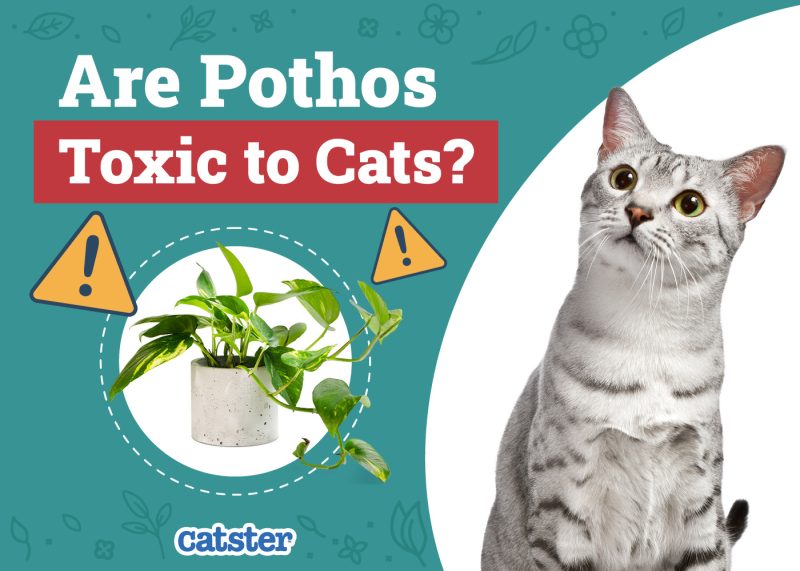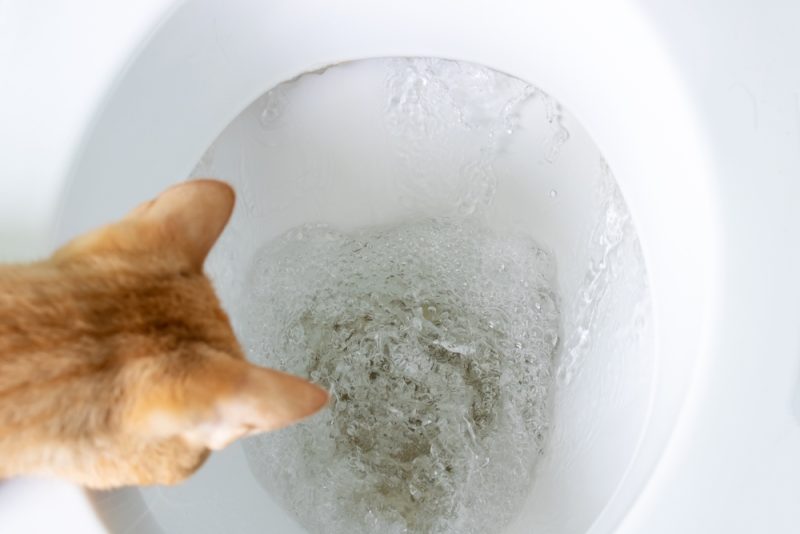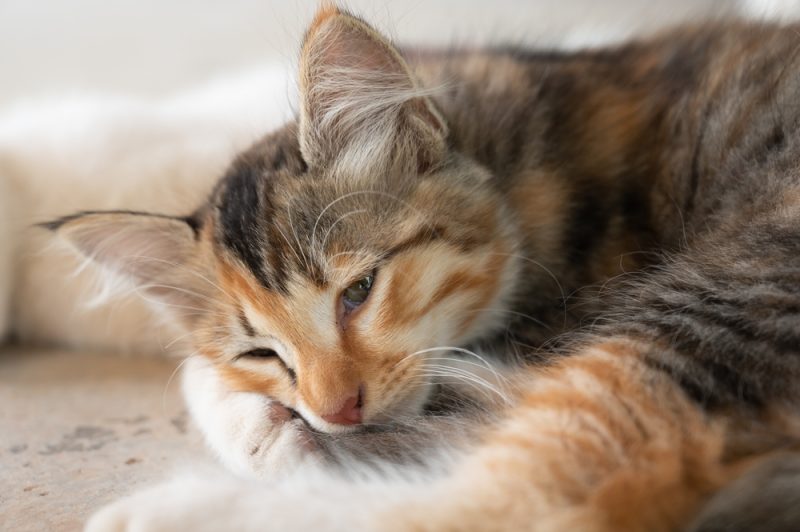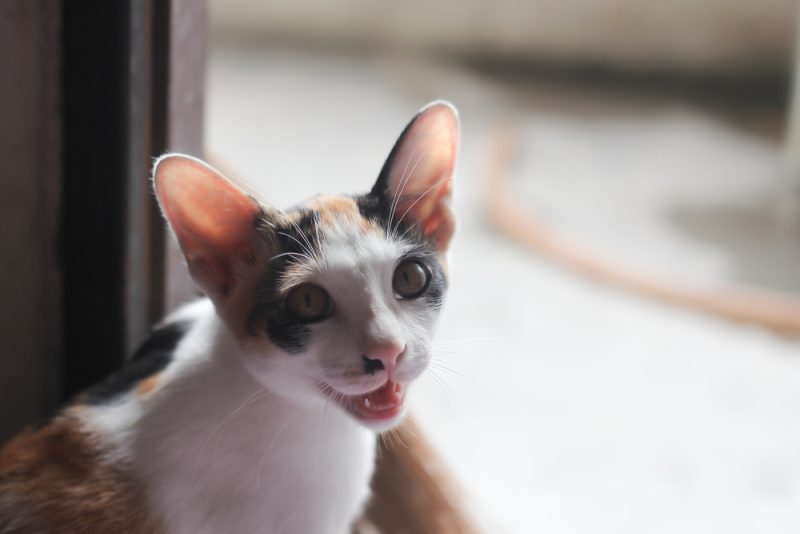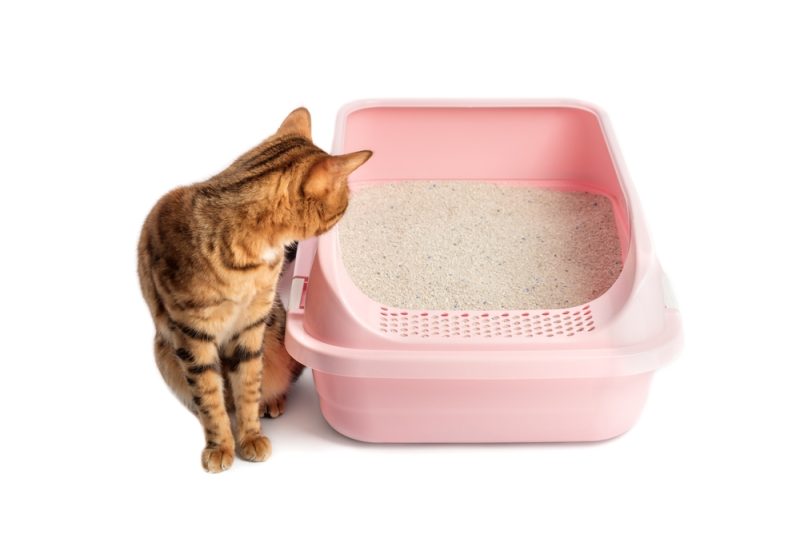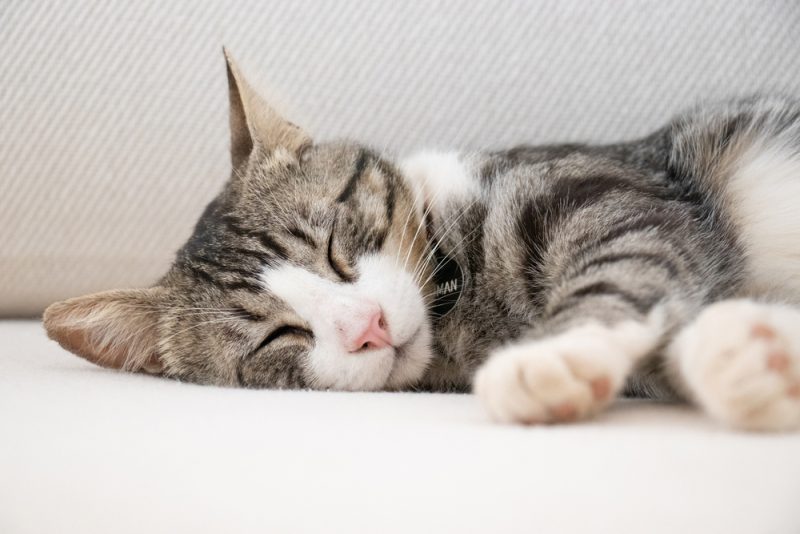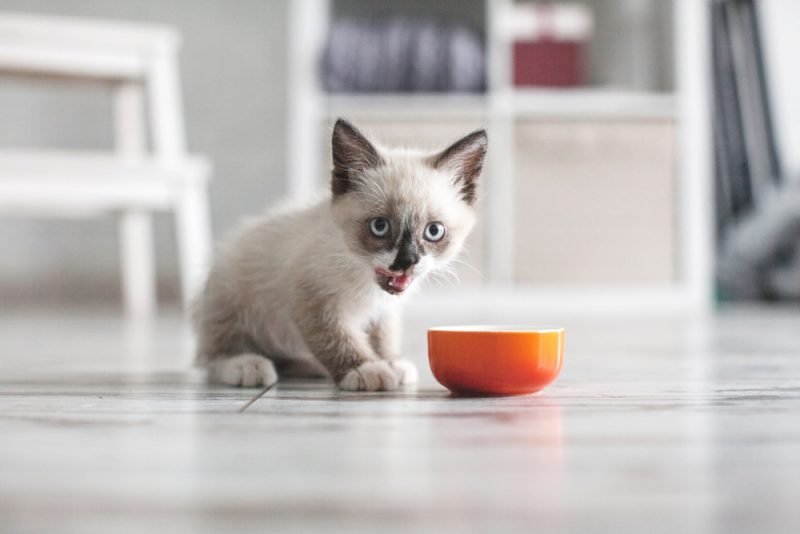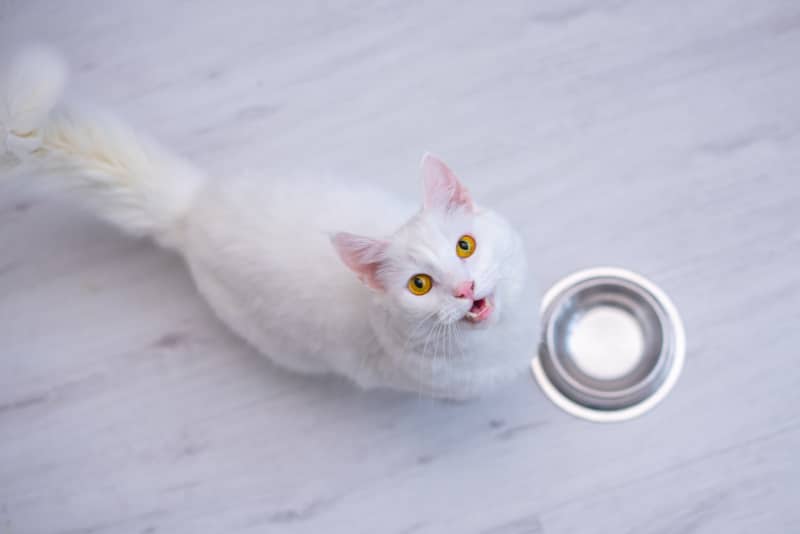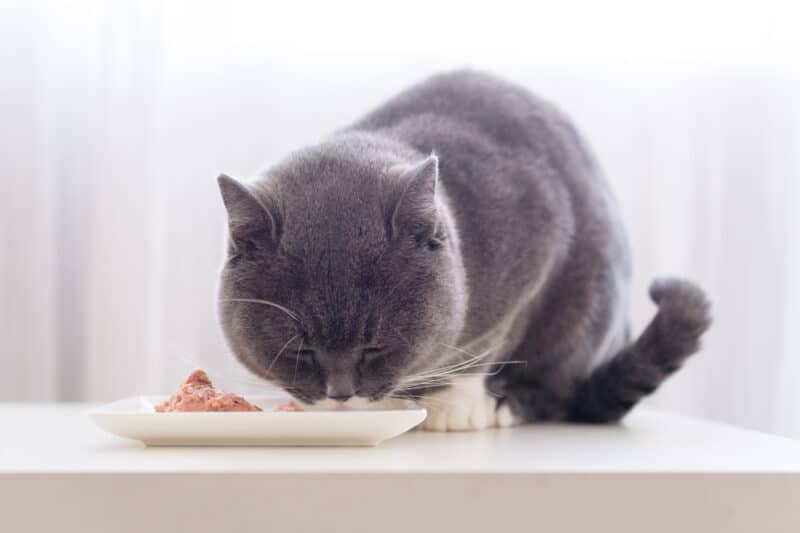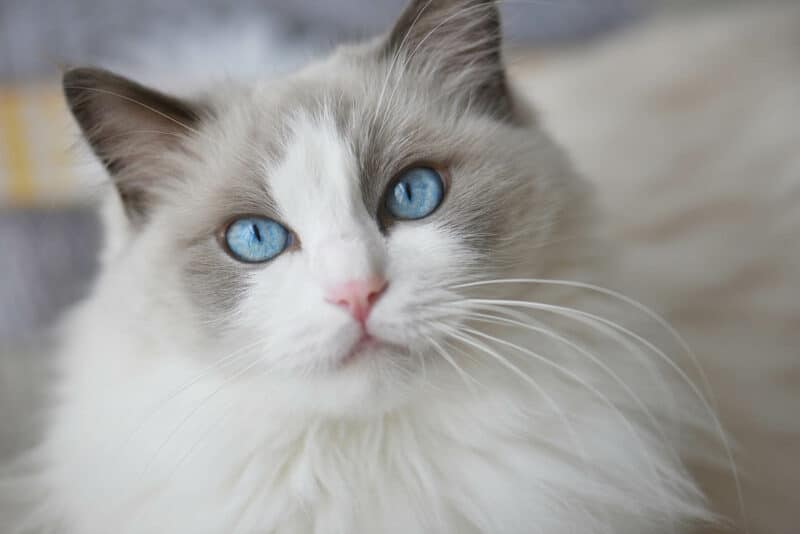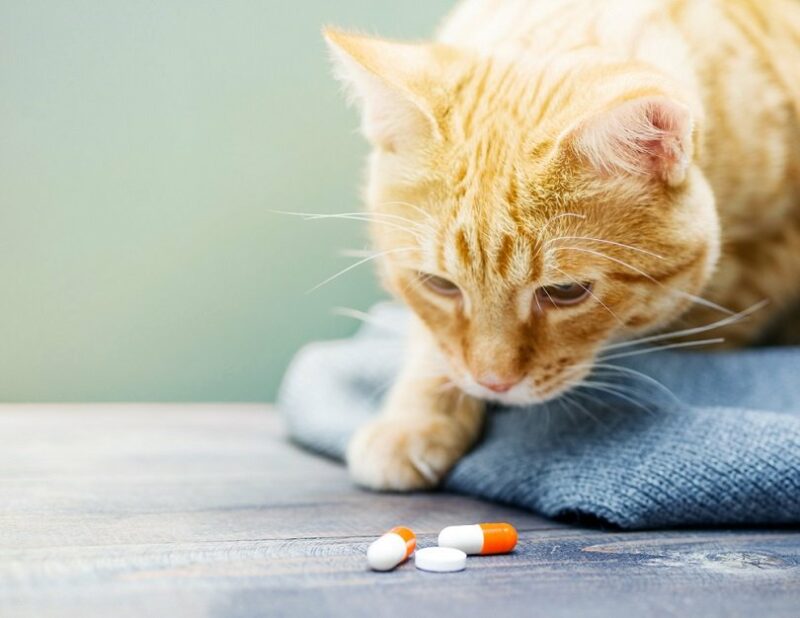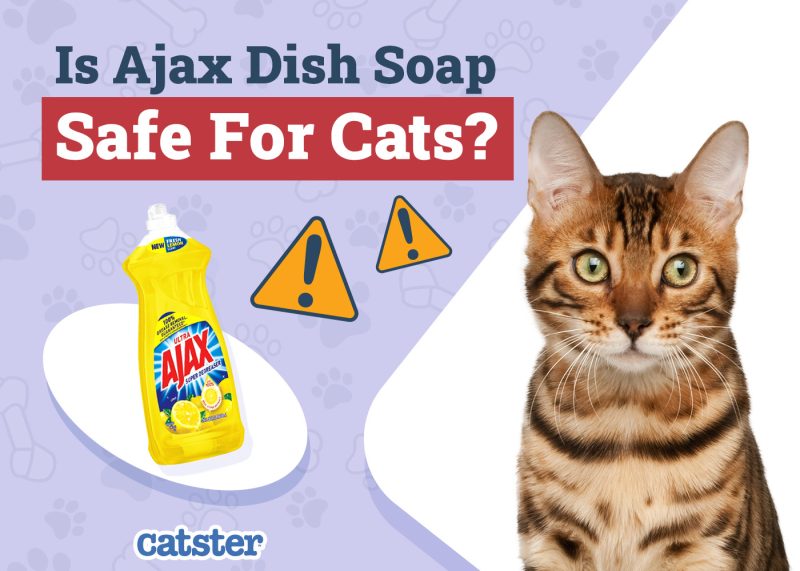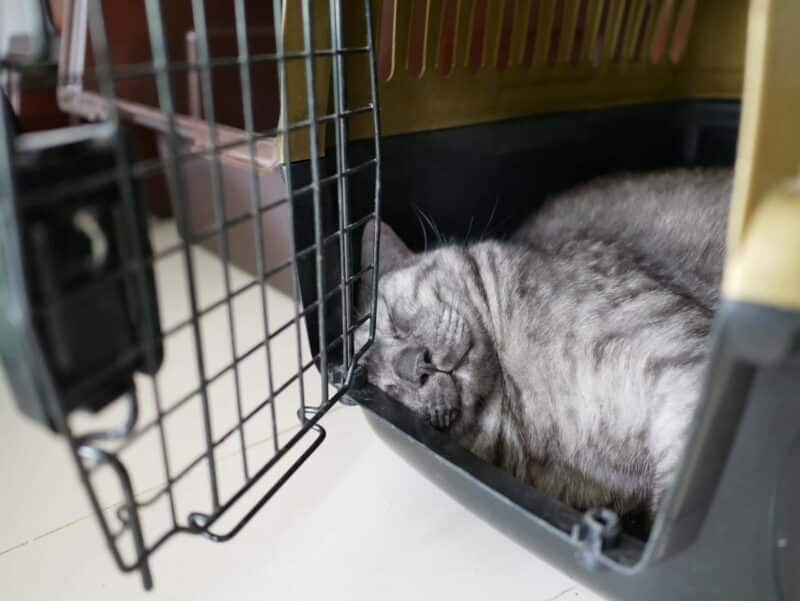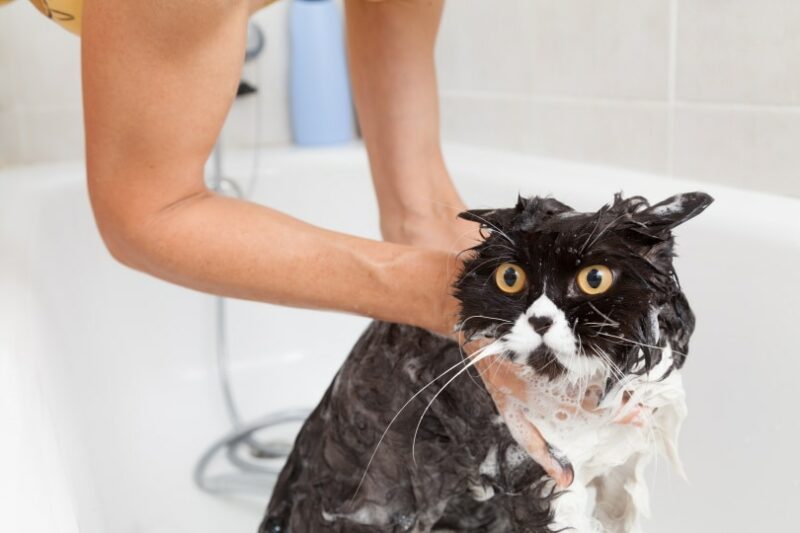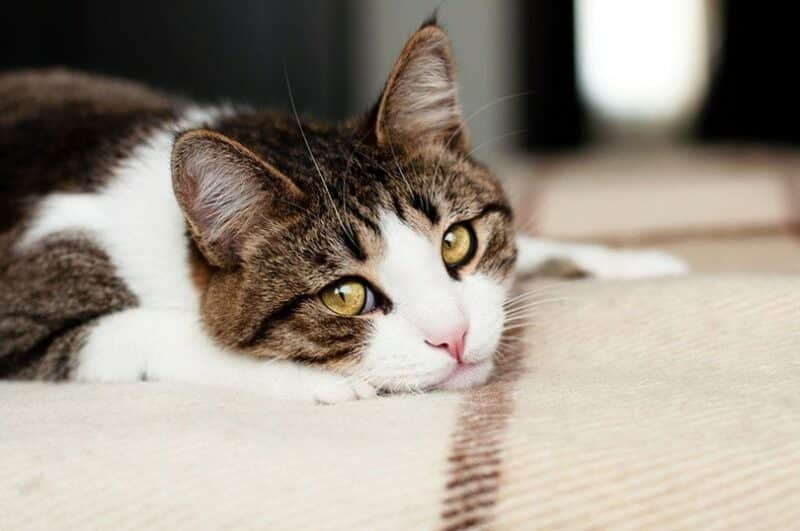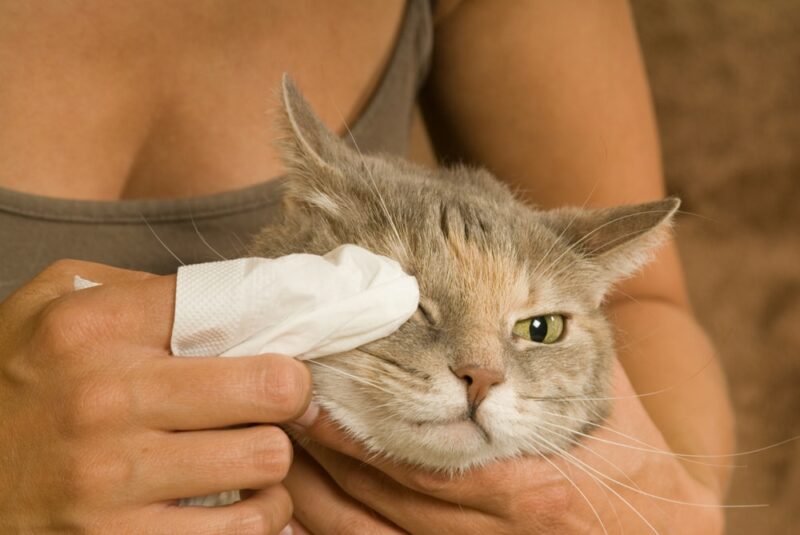In this article
View 3 More +Golden Pothos are among the most common houseplants. They are exceedingly easy to take care of and easy to find. Their large leaves make them very aesthetically pleasing. They’re also relatively slow-growing, so they don’t need to be repotted often.
However, it is worth knowing that pothos are toxic to cats. The leaves and stems contain a chemical called calcium oxalate in crystal form. These little crystals can penetrate the soft tissues of your cat’s mouth, throat, and stomach. This can cause damage to your cat’s digestive system—sometimes severely.

Are Pothos Toxic or Poisonous to Cats?
Pothos isn’t technically poisonous. It doesn’t contain any poison and won’t affect your cat’s kidneys. However, the plant contains a particular type of mineral called calcium oxalate crystals. These minerals are not digested easily like most other minerals. Instead, they pierce your feline’s soft tissues, including those in the mouth, throat, and stomach.
This can cause irritation, excessive drooling, and sensitivity in the mouth. An unfortunate encounter with them might result in difficulty swallowing and digestive issues. It isn’t that the plant is poisonous, but that pothos are toxic to cats and its minerals can cause tiny cuts, damaging the soft tissues.
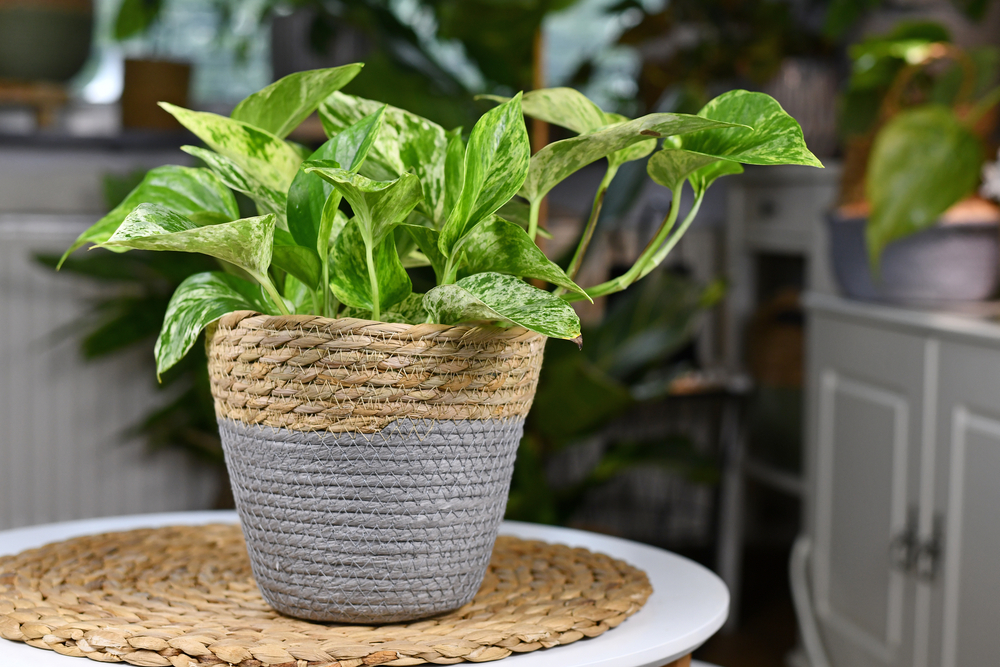
Signs of Pothos Poisoning
Sometimes, we may see our feline eat the plant. Other times, we will not. In these cases, we may only have signs to tell us that something is wrong.
Any irritation in the mouth is an obvious sign that your feline may have eaten a pothos leaf or stem. Pawing at the mouth is a common sign of pain, as your feline may try to remove the minerals from their mouth, though they cannot in any meaningful way. However, there are other signs as well, such as not eating or drinking. If you notice your cat has any mouth pain, that may be a clue.
Extreme drooling can also be a sign, as your cat’s mouth starts to secrete saliva to eliminate the minerals. Drooling may remove some of them, though it won’t remove enough to make a noticeable difference.
Your cat’s appetite will also be affected. Their mouth is irritated, and their esophagus or stomach may also hurt, making it painful or nearly impossible for them to eat. Vomiting can occur as well because of this. Their digestive tract may reject the food. Discomfort when swallowing is also expected since the minerals can damage the throat.
Diagnosis
Because pothos are toxic to cats you should take your cat to the vet right away if you notice any of these signs. You should also collect a sample of the plant to bring along to the vet, as they will want to confirm that it is a pothos before they begin treatment. If you can take a picture of the chewed plant or calculate the amount that your cat chewed, that is even better.
An examination will usually begin with your cat’s mouth, which can help determine the level of irritation. Be sure to take note of your cat’s signs, and let your vet know about them. There is no test for pothos poisoning, so the information you provide will play a significant role in your cat’s treatment plan by the vet.
If you need to speak with a vet but can't get to one, head over to PangoVet. It's an online service where you can talk to a vet online and get the advice you need for your pet — all at an affordable price!

Pothos Poisoning Treatment
Treatment should begin as soon as possible. First, you will need to make your cat more comfortable by alleviating the pain in their mouth, throat, and stomach. Often, your vet will ask you to flush your cat’s mouth. But if your cat ingested a large amount, your vet might ask you to bring your cat straight to the clinic. They will examine your cat’s mouth to rule out any other apparent cause for the irritation and pain. Sometimes, the presence of calcium oxalate crystals can be detected.
Second, the vet may feed your cat dairy products, as there is anecdotal evidence that these can help your cat’s pain. Other medications may also be given to treat the pain and prevent swelling, which on rare occasions, can affect your cat’s breathing. Without the proper medication, the signs may worsen and more complications may occur.
Your vet will decide if antiemetic medications to prevent vomiting are also necessary. Vomiting and not swallowing can lead to dehydration, especially if it goes on for too long, so your cat may get IV fluids if your vet considers it necessary.
Recovery
Many cats will recover quickly after they are treated. Once the crystals are flushed, they will no longer cause damage, and your cat can begin to heal. If your cat is dehydrated or has a swollen airway, they may need to stay overnight.
Your cat may need to eat softer food for a time since they will likely have some irritation for a while. Wet food may be necessary, especially if your feline is dehydrated. Wet foods are moisture-rich, which can help your feline get back to their original healthy state.
You should also prevent your cat’s exposure to the plant in the future. Remove it from your yard and garden. You should also check your home’s other plants to ensure that none of them are poisonous as well.
Of course, this won’t prevent your cat from eating poisonous plants in other areas if they are allowed to wander. For this reason, it may be best to keep your cat confined until they have completely recovered.

Conclusion
So, are pothos toxic to cats? Pothos plants aren’t poisonous, but they are toxic and contain a mineral that can damage soft tissues, like those found in your feline’s mouth, throat, and stomach. For this reason, it is essential to call your vet immediately if you suspect your cat has eaten some of this plant. Their mouth, throat, and stomach will need to be flushed to remove the crystals from their system.
In the future, be sure to check all plants before bringing them into your household. You’d be surprised by the number of toxic plants out there.
See also:
- Is Anthurium Toxic to Cats? Vet Approved Facts & FAQ
- Are Pussy Willows Poisonous to Cats? Vet-Reviewed Houseplants Examined
Featured Image Credit: Paladin12, Shutterstock
